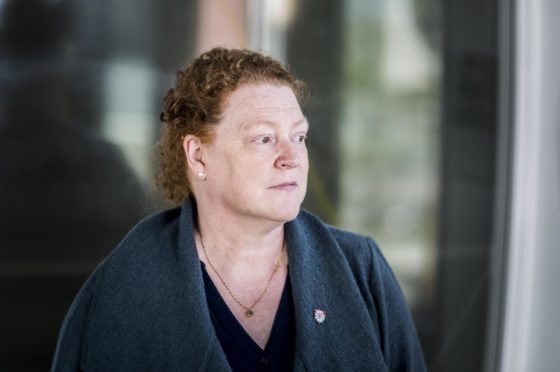A world-leading forensics expert who hails from Inverness has been appointed to the House of Lords.
Anthropologist Professor Dame Sue Black has witnessed the worst of human behaviour in recent history.
She investigated the casualties of genocide in Kosovo, ethnic cleansing in Iraq and a natural disaster in Thailand.
She has also assisted police in examining the victims of sex crimes and travelled to Grenada to work with the US military in a climate of insurrection.
She also played a part in the mystery surrounding the disappearance of Inverness mum Renee Macrae and her toddler son by investigating a quarry linked to the case.
Prof Black – dubbed Sherlock Bones by the tabloids – has now been made a non-party-political peer by the House of Lords Appointments Commission.
Currently based at Lancaster University as Pro-Vice-Chancellor for Engagement Professor, she will sit on the crossbenches.
Prof Black, who will take up her appointment alongside her current role at Lancaster, said: “I know this will be a challenging position and I view it as national service.
“I have been incredibly fortunate throughout my career and if those experiences can be brought to bear in government decision-making, then I can only promise to do my best which I hope will be enough.”
Prof Black is a familiar face to many thanks to her books, television documentary appearances and media work.
She currently leads the 2.5million euro H-unique project designed to identify serious criminals based on their hand anatomy.
The Chancellor of Lancaster University, the Rt Hon Alan Milburn, said: “We at Lancaster University are very proud of Sue’s elevation to the House of Lords. She will make a first-rate contribution to the work of the House.
“She is a world leading forensic anthropologist, anatomist and academic with a unique ability to engage with the public. She has successfully shaped public understanding across the world.
“Her game-changing work on the H-unique project, to identify serious criminals based on their hand anatomy, is only one example of her inspirational work.
“Sue’s exceptional drive, wisdom and experience will make her a huge asset to the House of Lords.”
The Appointments Commission recommends individuals on merit and their ability to contribute effectively to the work of the House.
From 2003 to 2018, Prof Black was Professor of Anatomy and Forensic Anthropology at the University of Dundee.
She is the current President of the Royal Anthropological Institute of Great Britain and Ireland.
Her forensic expertise has been crucial to a number of high-profile criminal cases, including the conviction of Scotland’s largest paedophile ring in 2009.
In 1999 she headed the British Forensic Team’s exhumation of mass graves in Kosovo.
Prof Black was awarded the OBE in 2001 for her work in Kosovo.
In 2003 she undertook two tours to Iraq and in 2005 she participated in the UK’s contribution to the Thai Tsunami Victim Identification operation as part of the 2004 Indian Ocean earthquake and tsunami international response.
In 2008 a research database of hand images was created to combat the sexual exploitation of children.
This has allowed her team to build up a classification of anatomical features that can aid confirmation of the identification of individuals perpetrating child sexual abuse.
Her team are the only researchers undertaking this work in the UK and she remains forensic case active assisting individual police forces and the National Crime Agency.
